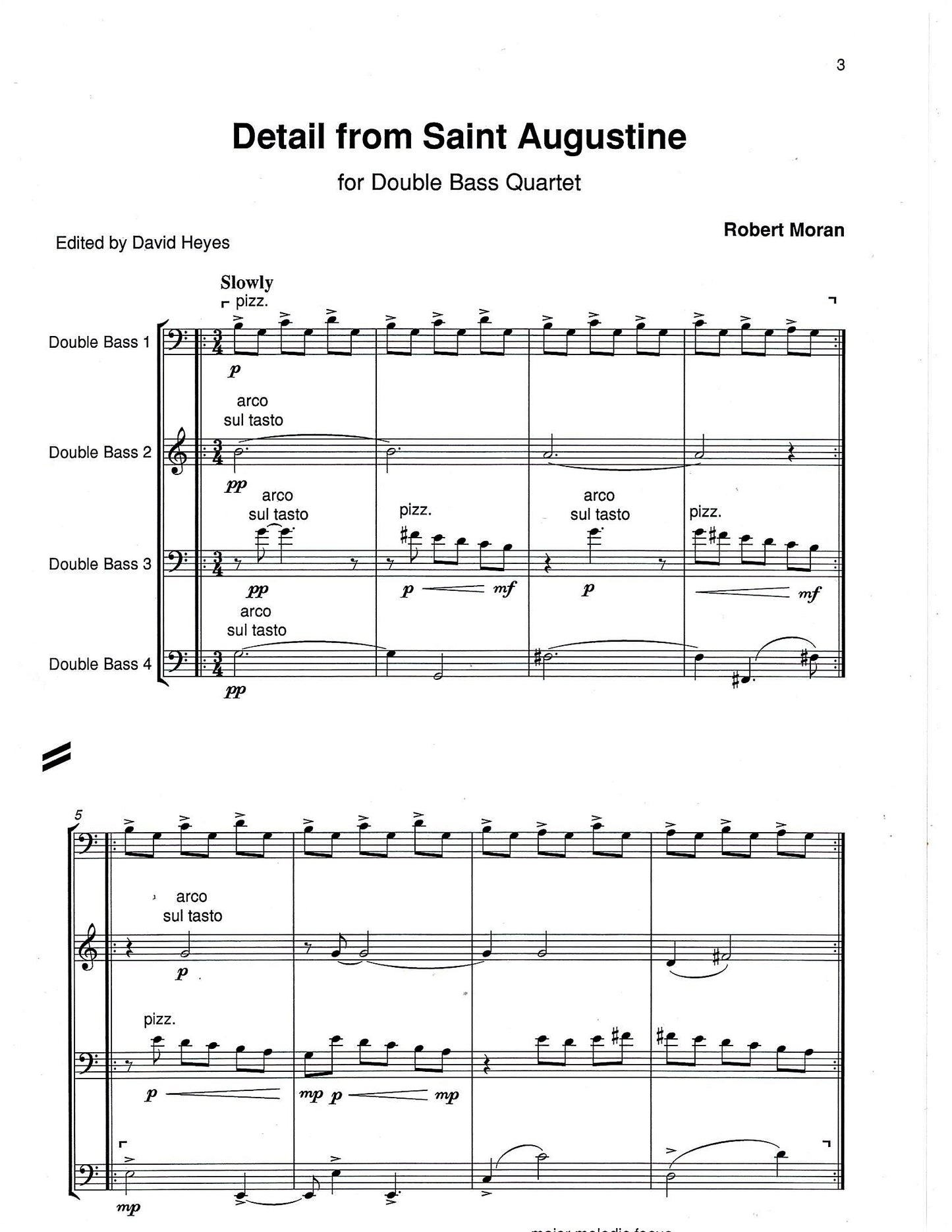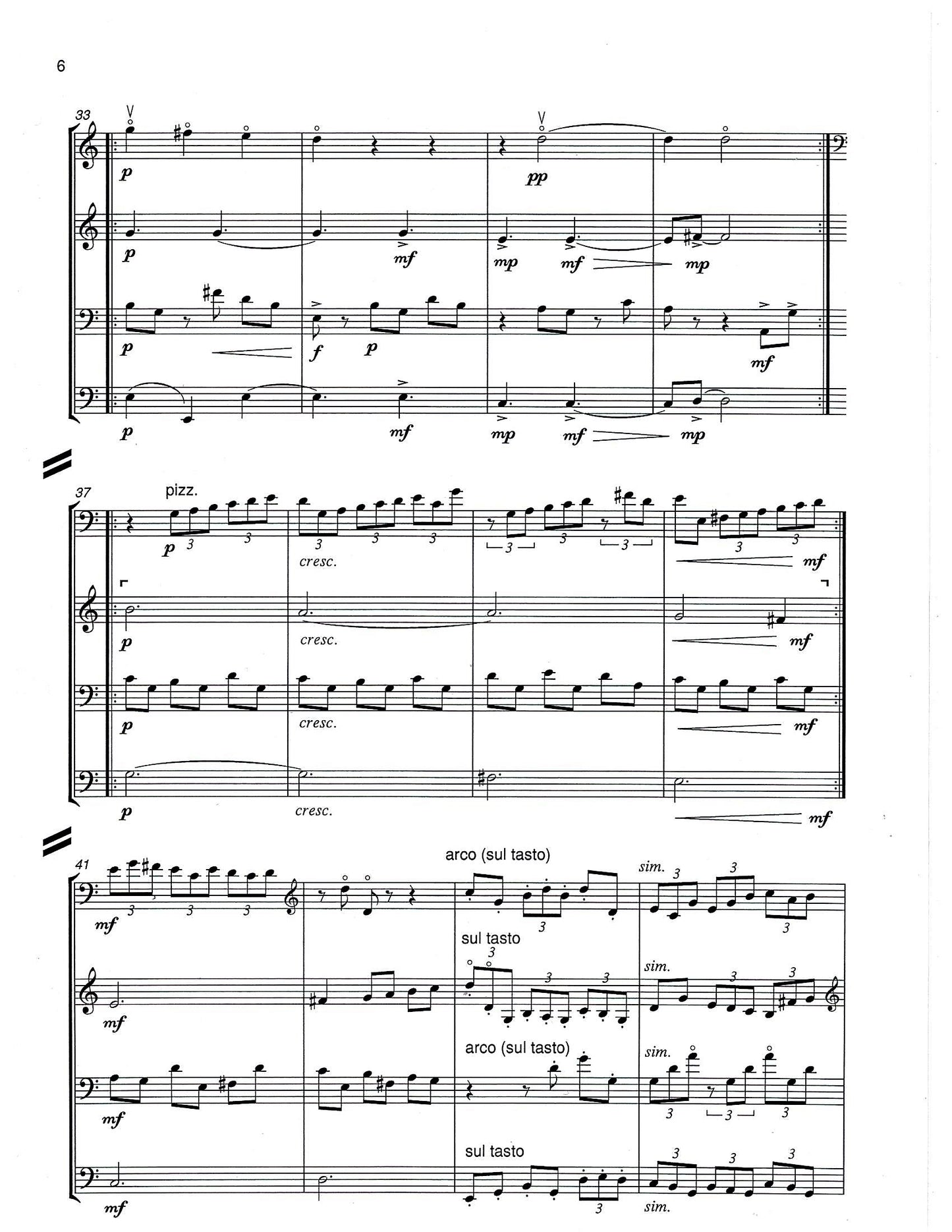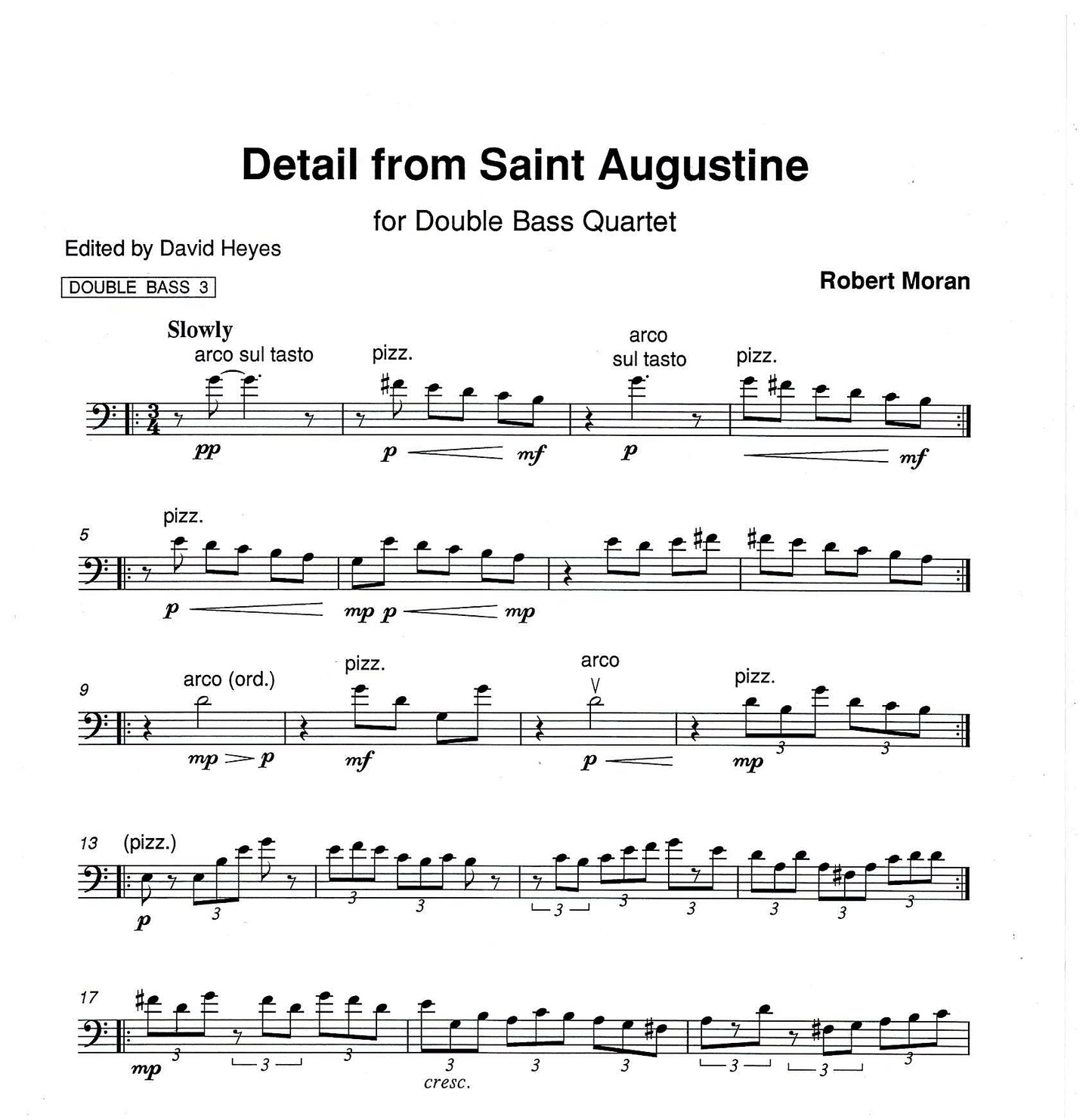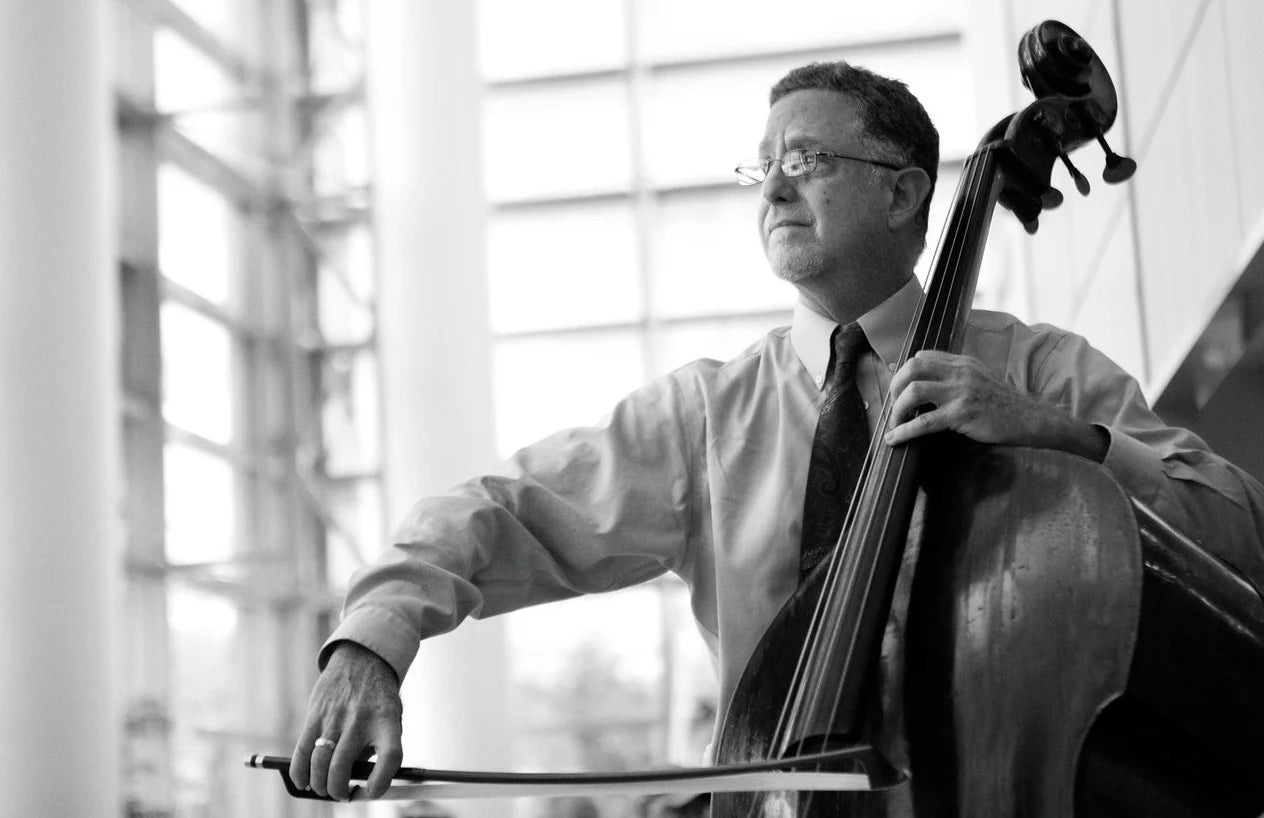David Heyes
Robert Moran: Detail from Saint Augustine for double bass quartet
Robert Moran: Detail from Saint Augustine for double bass quartet
Couldn't load pickup availability
About the Composition
Detail from Saint Augustine was composed in July 1985 for Rodney Slatford and his Mini-Bass Project in Britain, and was revised in 2010 by David Heyes.
The one movement quartet offers a range of musical and technical challenges for the good intermediate quartet, abounding in magical textures and timbres. Careful attention should be paid to the range of dynamic and articulation markings.
The title is taken from a book about Gothic paintings. One illustration of St. Augustine, which also included a 'detail of a portion of this work' was the starting point for the quartet.
The composer uses a rich palette of colours, well suited to the range of the double bass quartet, and the melodic interest is passed from player to player. Detail from Saint Augustine is a work of great imagination, atmosphere, textures and timbres.
There is much of interest for each player, with meandering and evocative contrapuntal lines helping to create a bass quartet like no other. The contrasts of arco and pizzicato, sul tasto and harmonics, maintain interest for players and audiences alike.
About the Composer
Robert Moran has already written his place into the rich tapestry of contemporary music which has flourished in the United States in the second half of the twentieth century. Whilst Glass, Reich and Riley trod the various paths towards “minimalism”, Moran was composing and organizing "performance art" spectaculars such as Thirty Nine Minutes for Thirty Nine Autos -- a deceptive title for a piece which used 100,000 performers and most of downtown San Francisco-premiered in august 1969, or Hallelujah (April 1971) using most of Bethlehem, Pennsylvania and twenty marching bands, forty church choirs, gospel groups, etc. Whilst these great multi-media events may have been a product of their time, in Moran’s case they point to an underlying philosophy which sees music as a shared experience. In terms of this shared experience with his performers, he wrote a series of graphic scores in the 1960s and 1970s which, while controlling the elements of structure, gave the performer a distinctly creative role. As art in themselves, these scores have been exhibited throughout the world, including at Berlin’s Academy of Art, and a two-year period in the Lincoln Centre Library for the Arts (1980-82).
About the Composer
Robert Moran was born January 8, 1937 a “through and through Capricorn," and raised in Denver, Colorado. Having studied with Apostel (12 Tone Composition in Vienna) and then Berio and Milhaud, Moran co-founded the San Francisco New Music Ensemble at the San Francisco Conservatory of Music in the mid-1960s. His time in America’s West coast culminated in an evening of his works given by the San Francisco Symphony in August 1974.
Soon after, he moved to West Berlin as composer-in-residence as a guest of the German government. There he fulfilled many commissions including works for children and also composed his third city-piece, Pachelbel Promenade, for the city of Graz in Austria.
A year before Moran returned to the U.S. as composer-in-residence at Northwestern University in 1977, he wrote Waltz in Memoriam: Maurice Ravel. This became the start of a collaboration with friend Robert Helps to put together a collection of twenty-five piano waltzes from twenty-five composers, including works by Babbitt, Cage, Glass, Helps, Moran and Sessions. The entire collection was premiered at Chicago’s Art Institute in May 1978 and recorded as “Waltz Project” in 1981, becoming one of the most fascinating ventures of the late ‘70s. “Waltz Project” has been choreographed by Phyllis Lamhut, Peter Martins, etc.
Moran’s work on the Waltzes eventually led to a further collaboration with Philip Glass in 1985 with the opera The Juniper Tree. In the past few years, living out of Philadelphia, Moran has composed full-time but for several lecture tours, fulfilling many commissions including two operas, Desert of Roses (premiered February 1992) for Houston Grand Opera, and From the Towers of the Moon (premiered March 1992) for the Minnesota Opera, both to libretti by Michael John LaChiusa. Moran’s chamber opera The Dracula Diary was commissioned by BMG and premiered via Houston Grand Opera (1994) using a libretto by James Skofield.
Moran has written for every imaginable ensemble: ancient folk instrument from Styria, Austria, Javanese gamelan, solo instrumental work, scores for six orchestras and six choruses (commissioned by the Berlin Festival 1974), multiple prepared pianos, etc. Apparition for 20 string basses had its premiere in Great Britain, August 2004. His 2006 work is scored for two choruses, organ, brass ensemble and 4 alp horns and premiered in Munich, Germany, conducted by Alexander Hermann and the extraordinary chorus, Chrismos.









